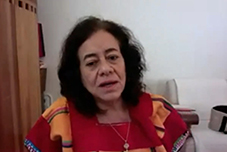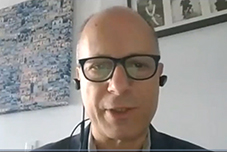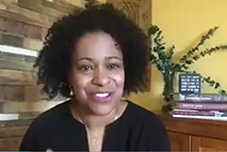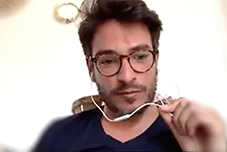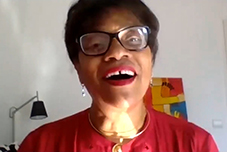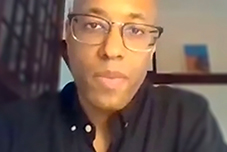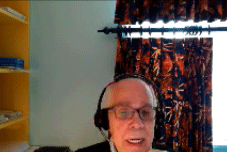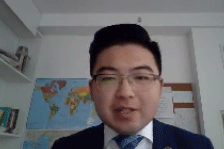
Roundtable Discussions
Resisting Enslavement: The History and Legacies of Maroon Communities, 25 October 2025
Knowledge History and Power, 6 December 2023
Panel Discussion about Museums and the Transatlantic Slave Trade highlights the role of the museums in inclusive programming, 30 March 2023
Virtual discussion examines how "race" shaped history and legacies of transatlantic trade in enslaved Africans, 26 October 2022
Online discussion highlights links between hate speech and legacies of the transatlantic slave trade, 16 June 2022
Online discussion: “In Slavery’s Wake: A new global curatorial collaboration on slavery and the making of our world”, 22 March 2021
Inclusion in the Time of Covid-19: Confronting Slavery's Legacy of Racism together, 28 May 2020
Civil Society Briefing Highlights Discrimination Linked to COVD-19 and Underscores Need to Confront Slavery's Legacy of Racism, 18 May 2020
Civil Society Gathering Discusses the Role of Memorials in Showcasing Transatlantic Slave Trade History and Contributions of People of African Descent, 28 March 2019
Exploring the Ark of Return during Kwanzaa Celebration at African Burial Ground National Movement, 27 December 2017
United Nations Remember Slavery Programme and Partners Recognize People of African Decent at events in Washington D.C., October 2017
The Transatlantic Slave Trade and the Socio-Economic Contributions of People of African Descent, 30 March 2017
Resistance to and the impact of the Transatlantic Slave Trade, 31 August 2016
The Musical Journey of the African Diaspora, 14 April 2016
Remembering Slavery: From Bunce Island to the Americas, 24 March 2016
Truth: Women, Creativity and Memory of Slavery, 5 October 2015
Online Discussion | Resisting Enslavement: The History and Legacies of Maroon Communities
The United Nations Outreach Programme on the Transatlantic Slave Trade and Slavery organized a moderated discussion about Maroon communities. This discussion examined Maroon communities in various countries connected to the transatlantic trade in enslaved Africans. Watch the discussion.
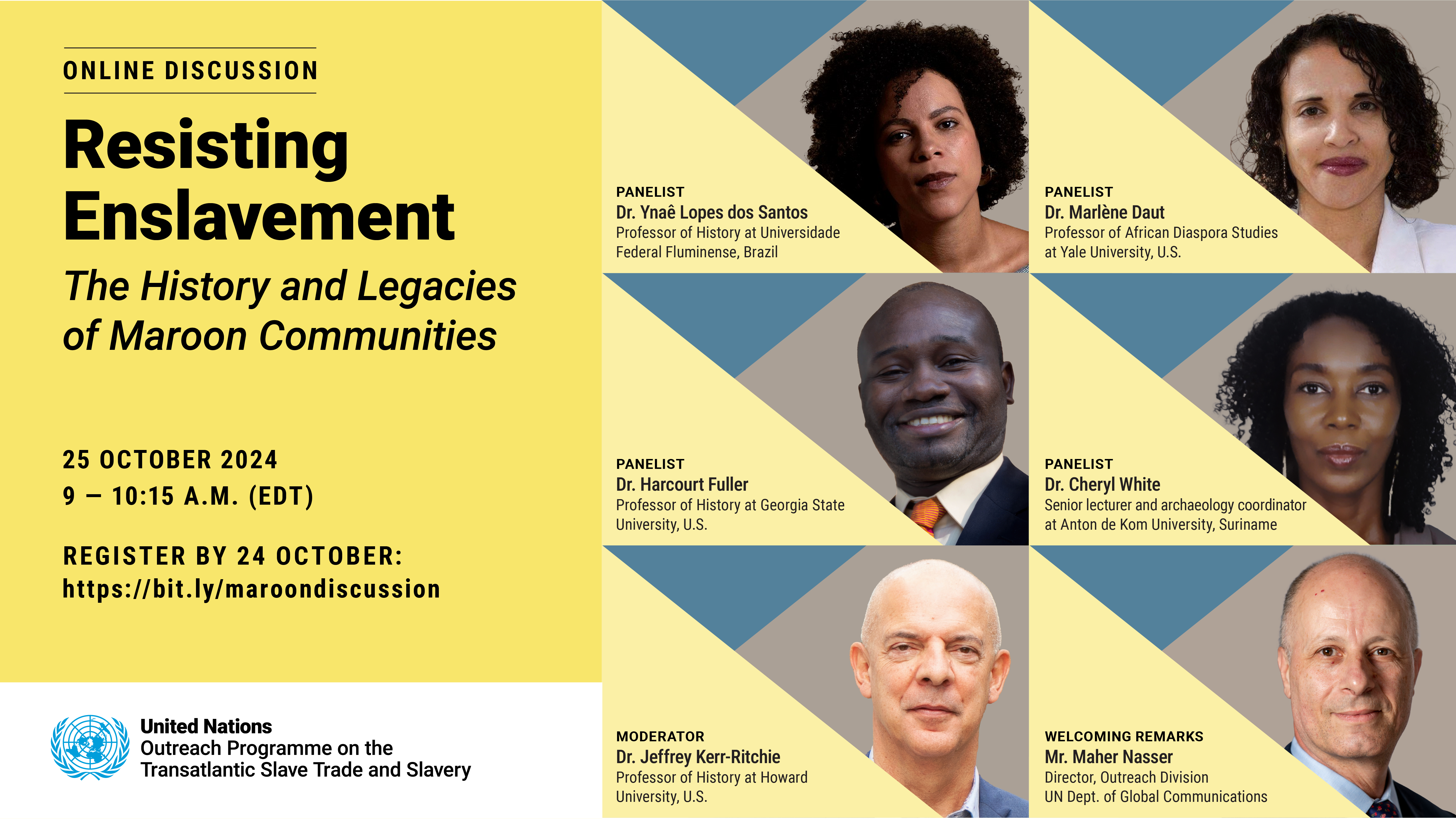
Knowledge, History and Power, 6 December 2023
On 6 December 2023, the Outreach Programme on Slavery and the Transatlantic Slave Trade hosted “Knowledge, History and Power” – an engaging conversation which featured Nikole Hannah-Jones, New York Times Magazine reporter and creator of “The 1619 Project” and Laura Trevelyan, former BBC correspondent and Honorary Associate Fellow at the PJ Patterson Institute for Africa Caribbean Advocacy at the University of the West Indies. Moderated by Professor Natasha Lightfoot of Columbia University, the hybrid event (in-person and online) was organized in collaboration with the Universities Studying Slavery Consortium, and within the context of the 75th anniversary of the Universal Declaration of Human Rights. Maher Nasser, Director of the Department of Global Communications Outreach Division delivered welcome remarks. Watch the recording..
UN News story: Award-winning journalists highlight UN as 'global body' advancing reparations
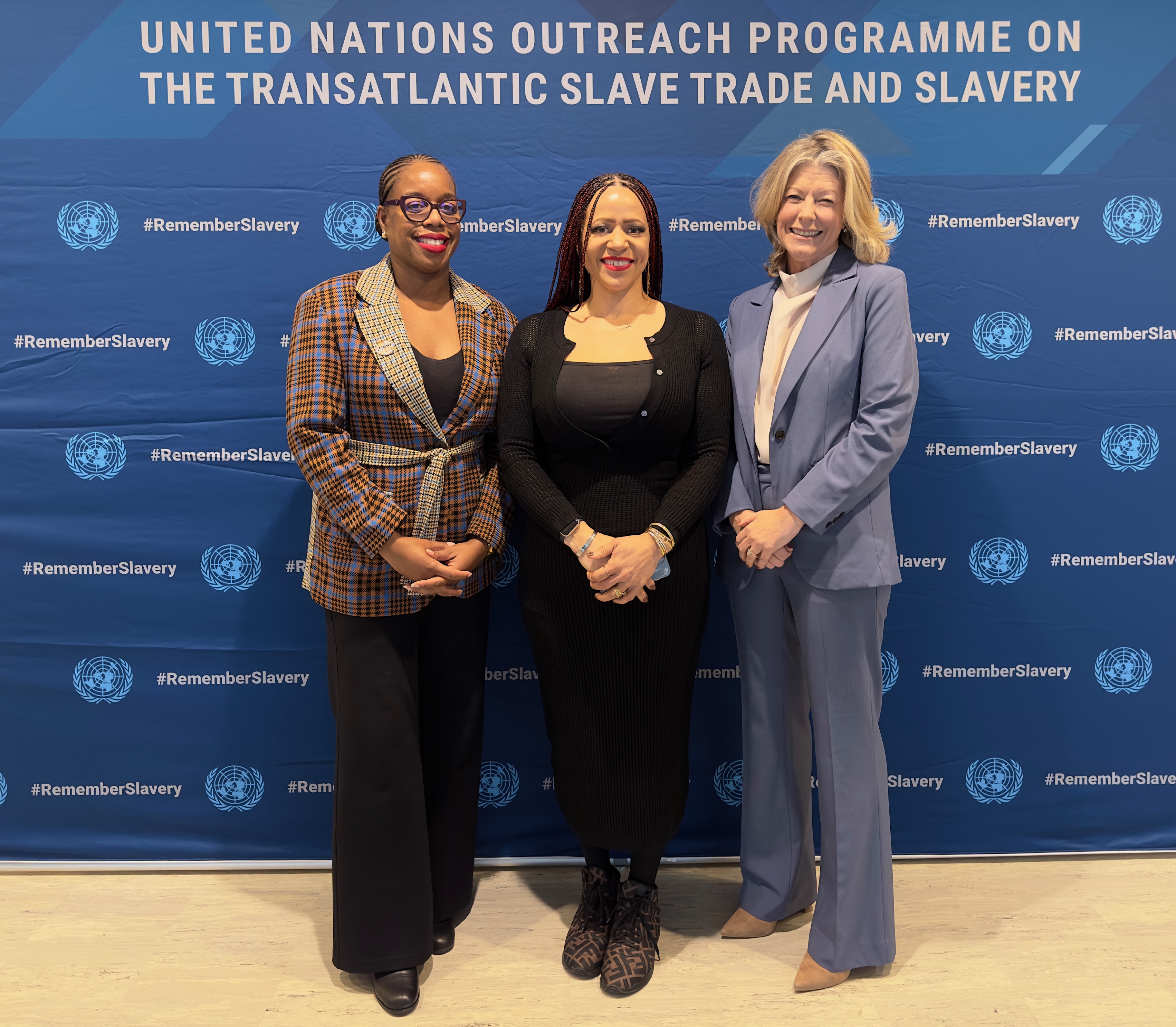
Photo: DGC/Catharine Smith
From left to right: Professor Natasha Lightfoot, Nikole Hannah-Jones, Laura Trevelyan
Beyond Colonial Histories. Keynote lecture by Bryan Stevenson & Panel Discussion about Museums and the Transatlantic Slave Trade highlighted the role of the museums in inclusive programming, 30 March 2023
The Department of Global Communications Outreach Programme on the Transatlantic Slave Trade and Slavery in collaboration with the Rijksmuseum and supported by the Permanent Mission of the Kingdom of the Netherlands to the United Nations and the Consulate General of the Kingdom of the Netherlands in New York hosted a keynote lecture by Bryan Stevenson & Panel Discussion about Museums and the Transatlantic Slave Trade titled, “Beyond Colonial Histories”. The moderated discussion was focusing on the history of slavery as a controversial theme in many countries and highlighted the current efforts by museums to include the voices of people of African descent; the importance and focus of ongoing research; inclusive programming; and dealing with the colonial past. Founder and Executive Director of the Equal Justice Initiative, Bryan Stevenson was the featured speaker. Other notable speakers included the General Director of the Rijksmuseum, Taco Dibbits; the Head of History Department in the Rijksmuseum, Valika Smeulders; the Head of the International Slavery Museum in Liverpool Richard Benjamin; Director of the Barbados Museum & Historical Society, Alissandra Cummins; and narrators Susi and Simba Mosis. Moderated by Strategic Advisor for Diversity & Inclusion of the Netherlands Ministry of Foreign Affairs, Arthur Kibbelaar, the panel discussion consisted of two parts. The first part was focusing on the history of slavery as a controversial theme in many countries. The second part highlighted the current efforts by museums to include the voices of people of African descent, the importance and focus of ongoing research, inclusive programming and dealing with the colonial past.
Watch the recording of the even
United Nations YouTube: Video recording of the keynote speech by Bryan Stevenson
UN News interview: Cultural spaces help counter harmful legacy of slavery, argues Bryan Stevenson

Bryan Stevenson delivers keynote address during Beyond Colonial Histories event.
Photo: DGC/Gabrielle Vardeleon

Narrators Susi and Simba Mosis (left); Valika Smeulders, the Head of History Department in the Rijksmuseum (center);
moderator Arthur Kibbelaar, Strategic Advisor for Diversity & Inclusion of the Netherlands Ministry of Foreign Affairs (right)
during Beyond Colonial Histories event.
Photo: DGC/Gabrielle Vardeleon
Virtual discussion examines how “race” shaped history and legacies of transatlantic trade in enslaved Africans, 26 October 2022
The United Nations Outreach Programme on the Transatlantic Slave Trade and Slavery, together with partners, organized a virtual discussion entitled “"Race" and Racism: Roots of Atrocity Crimes” – as part of the ongoing series “Beyond the Long Shadow: Engaging with Difficult Histories”. Speakers included Dr. Tara A. Inniss, a Lecturer in the Department of History and Philosophy at Cave Hill Campus, The University of the West Indies (UWI), and Director of the UWI/OAS Caribbean Heritage Network. She spoke about how a belief in so-called “race theory” shaped the history of the transatlantic trade in enslaved Africans and its lasting legacies.
Online discussion highlights links between hate speech and legacies of the transatlantic slave trade, 16 June 2022
The United Nations Outreach Programme on the Transatlantic Slave Trade and Slavery, together with partners, organized an online discussion entitled “Fighting Hate Speech: Global Perspectives”. Part of the ongoing series “Beyond the Long Shadow: Engaging with Difficult Histories”, the event took place on Thursday, 16 June 2022 at 9:00 a.m. EDT. Speakers included Dr. Apryl A. Williams, Assistant Professor of Communication and Media and affiliate of the Digital Studies Institute at the University of Michigan and Faculty Associate at the Berkman Klein Center for Internet and Society at Harvard University. She highlighted the links between hate speech and legacies of the transatlantic slave trade, including anti-Black racism and attacks on critical race theory.
Online discussion: “In Slavery’s Wake: A new global curatorial collaboration on slavery and the making of our world”, 22 March 2021
In this panel discussion, members of the Global Curatorial Project network discuss new global initiatives bent on telling new and transformative stories of slavery and its afterlives in public spaces. Panelists include: Paul Gardullo, Director of the Center for the Study of Global Slavery, Smithsonian Institution's National Museum of African American History and Culture; Anthony Bogues, Director of the Center for the Study of Slavery and Justice, Brown University; Johanna Obenda, Researcher and Exhibition Development Specialist at Smithsonian National Museum of African American History and Culture; Richard Benjamin, Head of the International Slavery Museum, Liverpool and Ibrahima Thiaw , Professor of Archaeology, Institut Fondamental d’Afrique Noire (IFAN), University Cheikh Anta Diop in Dakar. Watch the discussion
Inclusion in the Time of COVID-19: Confronting slavery’s legacy of racism together, 28 May 2020
28 May 2020 – The transatlantic slave trade remains one of the gravest crimes against humanity that the world has ever seen. But it is not just a dark footnote in human history – because we are still living with its shameful legacies. The COVID-19 pandemic starkly exposed those legacies – including racism, inequality and the vulnerabilities of people of African descent across the globe.
That was the focus of today’s virtual discussion, entitled “Inclusion in the Time of COVID-19: Confronting Slavery’s Legacy of Racism Together.” Organized by the United Nations Remember Slavery Programme and the United Nations Educational, Scientific and Cultural Organization (UNESCO) – in the context of the International Decade for People of African Descent (2015-2024) – the webinar focused on how COVID-19 has exacerbated health conditions linked to structural racism and caused people of African descent to suffer disproportionately.
After Tabue Nguma from UNESCO’s Social and Human Sciences Sector welcomed the audience of 380 participants, opening remarks were delivered by Maher Nasser, Director of the Department of Global Communications’ Outreach Division. Mr. Nasser stated that, in multiple countries, higher death tolls from COVID-19 were being recorded in black communities. But that was not a coincidence. Drawing clear links between the transatlantic slave trade and ongoing structural racism, he noted that disproportionate numbers of people of African descent lived in densely populated communities; had unequal access to food, water and secure housing; and were crowded into prisons. Calling for solidarity, he said that, in order to build back better, it was necessary to dismantle racist structures, reform racist institutions, and confront slavery’s legacy of racism together.
The webinar’s four expert panelists were: Lisa Coleman, Senior Vice President for Global Inclusion, Diversity and Strategic Innovation at New York University; Yoann Lopez, Project Manager in charge of Memory, Racism and Antisemitism for the City of Bordeaux; María Elisa Velázquez, Mexican anthropologist and former President of the UNESCO Slave Route Project’s International Scientific Committee; and Canadian hip-hop artist and lecturer Webster.
Dr. Coleman explained that the need for labour in the New World had been the driving force behind the transatlantic slave trade, which resulted in the forced migration of an estimated 17 million Africans to the Americas. People with different skills were captured because of their knowledge and sent to specific regions to provide free labour. Even after emancipation in the United States, the work of African Americans continued to be undervalued through the enforcement of the Black Codes, which were used to “contain and constrain” the labour of black people post-slavery. Hundreds of years later, these disparities continued to exist and had resulted in people of African and Hispanic descent being disproportionately employed in service industries and earning considerably less than their white counterparts – leading to a differential impact on these communities from COVID-19. Connected to this was the global image making of people of African descent, who were “blamed and shamed for their own disease and… treated as criminals”. Dr. Coleman concluded by highlighting the importance of the Sustainable Development Goals and partnerships between the international community and black communities globally to address intersectional disparities and the facts surrounding COVID-19.
Addressing the role of mayors and cities in fostering inclusion, Mr. Lopez spoke about policies implemented by the City of Bordeaux to address inequality and ensure that the transatlantic slave trade was not forgotten. Since March 1998, when thousands of descendants of enslaved Africans had come to Bordeaux to mark the 150th anniversary of the abolition of slavery, the City of Bordeaux had established a day of commemoration, adopted a memory action plan and acknowledged the magnitude of its role in the transatlantic slave trade. Bordeaux had been one of the largest slave-trading ports in France, but today, it was fully engaged in the fight against racism, discrimination and marginalization of people of African descent. He said that Bordeaux, a member of UNESCO’s International Coalition of Inclusive and Sustainable Cities (ICCAR), offered free medical care to all people, including those of African descent. His city was therefore a good example, as it had used integration, inclusive memory and universal health care, to address any vulnerabilities that black communities might face in the COVID-19 context.
Speaking from Mexico City, Dr. Velázquez highlighted the enormous disparities, exploitation, historic discrimination and racist stereotypes, that had grown out of the transatlantic slave trade. Noting that the concept of race had been introduced to justify the enslavement of Africans, she added that, although scientists had proven that race was not grounded in genetics, the notion was still used by many societies to differentiate between groups of people. One thing that stood out during the COVID-19 pandemic was the link constantly being drawn between race and disease. While it was difficult to calculate how many people of African descent were getting sick and dying from COVID-19 in Latin America and the Caribbean, it was clear that many black communities – in such countries as Brazil, Colombia and Ecuador – did not have the necessary health infrastructure to tend to the sick. Last year, Mexico had recognized Afro-descendants in its federal constitution and as a category in its census. Since COVID-19 had arrived when the census was not complete, it was difficult to get race-based statistics. However, Afro-Mexicans continued to lack access to medical care and to experience discrimination during the pandemic. She called for solidarity in the face of COVID-19.
Webster highlighted the relatively unknown history of slavery in Canada. Many Canadians, for example, did not know that the first enslaved African had arrived in Quebec in 1629 from Madagascar. He also explained how racist thinking from the time of slavery had been embedded into societal norms and still shaped modern medicine. Examples included the notion that black people experienced less pain, which led to them often being prescribed inadequate pain medication in Canada and the United States. He also referred to a 19th century diagnosis of enslaved people’s desire to flee captivity as a mental illness called drapetomania. Noting that structural racism led to real health impacts, he stressed that social distancing was a privilege that not everyone could afford. Currently, there was no data in Canada on the effects of COVID-19 on people of colour. But social justice activists were advocating for that. Meanwhile, Montreal had emerged as a COVID-19 epicenter in Canada, and the neighbourhood that was suffering the most was North Montreal, which also happened to be the poorest and most racially diverse in the country. Webster explained how he had used hip-hop to tell the little-known history of slavery in Canada – as a way to “democratize knowledge.” He concluded by saying that it was not race that had created racism but rather racism that had created race.
Panelists agreed that understanding the transatlantic slave trade was essential in order to address the COVID-19 pandemic and break down barriers caused by racism. This sentiment was echoed in closing remarks by Angela Melo, Director of Policies and Programmes in UNESCO’s Social and Human Sciences Sector, who pointed to UNESCO’s efforts to promote education about slavery and address slavery’s legacy of racism through its Slave Route Project, its Master Class against Racism, and the ICCAR network of mayors, which now had 500 members across the globe engaged in discrimination-free development.
According to a survey conducted after today’s webinar, 83 per cent of respondents said the discussion had increased their understanding of the transatlantic slave trade’s legacy of racism; 84 per cent said it had increased their understanding of how COVID-19 had exasperated inequalities that had long existed for people of African descent; and 66 per cent said they would apply what they had learned to their work or studies.
The webinar was moderated by Brenden Varma, Manager of the United Nations Remember Slavery Programme.
Briefing with civil society highlights stigma, xenophobia, hate speech and racial discrimination related to COVID-19, 18 May 2020
18 May 2020 – To mark the International Day of Living Together in Peace (16 May), more than 300 people came together in an online webinar today to discuss societal inequalities linked to the COVID-19 pandemic. The virtual event – entitled “Fighting Stigma, Xenophobia, Hate Speech and Racial Discrimination related to COVID-19” – was organized by the United Nations Remember Slavery Programme, in partnership with the United Nations Department of Global Communications’ Civil Society Unit and The Holocaust and the United Nations Outreach Programme.
The discussion underscored the need to educate people about racism, one of the legacies of the transatlantic slave trade, and the urgency of confronting slavery’s legacy of racism together, which is the theme of the 2020 International Day of Remembrance of the Victims of Slavery and the Transatlantic Slave Trade and events organized by the Programme throughout the year. Speakers, including representatives from the United Nations and civil society, touched on topics ranging from xenophobia and hate speech to racial discrimination and antisemitism.
Welcoming participants was Jeff Brez, Chief of the Civil Society Unit, who spoke about the work his office had been doing since the onset of the pandemic in sharing stories about how civil society has responded to COVID-19 and encouraging collective action. Tracey Petersen, Manager of the Holocaust and the United Nations Holocaust Programme and moderator, opened the discussion by noting how the pandemic had exacerbated inequalities in society, saying: “The COVID-19 crisis extends beyond the arena of physical health and has revealed with devastating clarity the fault lines that exist in society”.
Two of the panelists addressed racism from the perspective of African American communities. Janice Matthias, Executive Director of the National Council of Negro Women said people of African descent had been dying in greater numbers from the disease due to systemic racism, “which keeps people stratified”. She stressed that every human being has the right to health care. Jadayah Spencer, the Executive Director of the International Youth Leadership Institute, spoke about her work in preparing black youth for a world with increasing disparities. She emphasized, “It is now more important to create safe spaces, as we step into a future that it is unknown, especially for those who are the most marginalized”. She also noted that only one in five people of African descent had jobs that allowed them to work from home.
Panelists also discussed the role of the United Nations and civil society in fighting racism, xenophobia and hate speech. Craig Mokhiber, Director of the New York Office of the United Nations High Commissioner for Human Rights, explained how certain United Nations mechanisms could be helpful in holding Governments accountable, such as the Secretary-General’s system-wide strategy to address hate speech; Special Rapporteurs; treaties; and Universal Periodic Reviews. He noted that the pandemic was being used as a curtain to “ramp up abuse towards marginalized communities” and emphasized that “solidarity was the best vaccine against racism”. Simona Cruciana, Political Affairs Officer from the United Nations Office on Genocide Prevention and the Responsibility to Protect, noted the Secretary-General’s appeal of 8 May, to counter the tsunami of hate speech that had risen alongside the COVID-19 pandemic, was of particular importance.
The universal theme of racism was demonstrated in examples from across the globe. Akshaya Kumar, Crisis Advocacy Director of Human Rights Watch, gave accounts of incidents in various countries and spoke about the rising tide of antisemitic comments linked to COVID-19. She also spoke about violence against women and said, “women are now twice as likely to face gender-based violence because of the pandemic”. She called on civil society to help establish an action plan to combat inequality related to the pandemic.
Doctors and nurses working on the front lines to save lives have also been stigmatized because of the COVID-19 virus in every corner of the world. Franklin Shaffer, President of CGFNS International, and Nico Gennaro Sciasci, Programme Manager at the International Centre on Nurse Migration, gave accounts of caregivers experiencing harassment and threats in the communities where they lived. Some caregivers had been asked to move; others had experienced evictions.
Yizhong Yang, a Rutgers University graduate and intern in the Civil Society Unit, was invited to set the stage for the briefing. He spoke about his first encounter with racism linked to COVID-19 from early January, where he had been told at the airport in New York to go back to his country with his virus because he had been wearing a mask. Since then he had learned of an Asian person being pushed off a subway platform for wearing a mask and other incidents of racism and intolerance. Also addressing racism targeted at Asians across the globe was Andrea Chu of Asian Americans Advancing Justice. She felt the wave of racism unleashed by the pandemic was related to “irrational fear and the greater economic fear”.
According to a survey conducted following the briefing, all participants agreed that the discussion had increased their understanding of how disinformation about COVID-19 has been used to encourage racism, prejudice and stigmatization. In addition, 96 per cent of all respondents reported that the briefing had given them an understanding of what measures were being taken to combat stigma, racism and prejudice arising in the context of COVID-19. Meanwhile, 69 per cent said they would apply what they learned at the briefing to their work or study activities.

